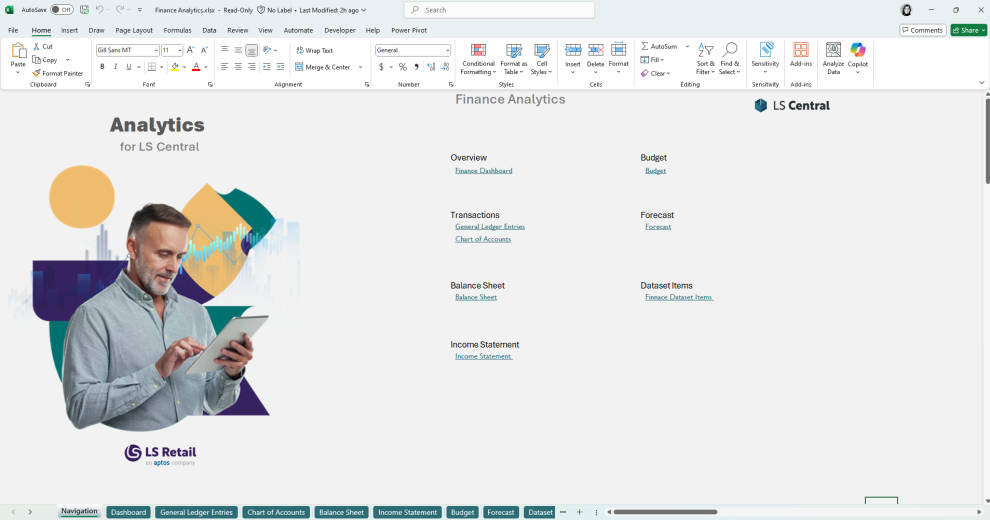In this article
Excel Connecting Directly to Azure SQL Server Data Warehouse
Excel Export or Import via Power BI Reports
Connect Excel to Power BI Semantic Model
This guide explains three methods to connect Analytics for LS Central data to Excel. Each method includes steps, purpose, pros, and cons.
Note: The image below shows, Analytics for LS Central and Excel connection diagram. 
Excel Connecting Directly to Azure SQL Server Data Warehouse
Connect Excel directly to the Azure SQL Data Warehouse for raw LS Central data.
Steps:
1. Open Excel.
2. Go to Data → Get Data → From Database → From SQL Server Database.
3. Enter:
Server name: (Your Azure SQL Server)
Database name: (Your LS Central Data Warehouse)
4. Choose Import or DirectQuery.
5. Load data into Excel.
Pros:
✔ Direct access to raw data
✔ Scheduled refresh
✔ Flexible for custom analysis
Cons:
✖ Requires SQL knowledge
✖ Slower for large datasets
Excel Export or Import via Power BI Reports
Use Power BI reports as a source for Excel or upload Excel data into Power BI.
Steps
Export from Power BI
1. Open Power BI Service.
2. Navigate to the report.
3. Click Export → Analyze in Excel.
Or,
1. Open Power BI Service.
2. Navigate to the report.
3. Select a Visual → Click at More options → Export Data
Import Excel to Power BI
1. Open Power BI desktop → Get Data → Excel workbook.
2. Upload your Excel file.
Pros:
✔ Easy for non-technical users
✔ Leverages curated KPIs
Cons:
✖ Static data (manual refresh)
✖ Limited flexibility
Connect Excel to Power BI Semantic Model
Connect Excel directly to the Power BI semantic model.
Steps
1. Open Excel.
2. Go to Data → Get Data → From Power Platform → From Power BI.
3. Sign in with your Power BI account.
4. Select the Power BI Dataset and choose to Insert PivotTable or Table
Pros:
✔ Easy for non-technical users
✔ Leverages curated KPIs
✔ Dynamic, curated model
✔ Scheduled refresh
✔ Access to measures & hierarchies
Cons:
✖ Requires Power BI license
✖ No model editing in Excel
Download the Excel template file below as a sample for the connection between Excel and the Power BI Sales Analytics Semantic model:
Finance Analytics Excel - Connection to Power BI Semantic Model
